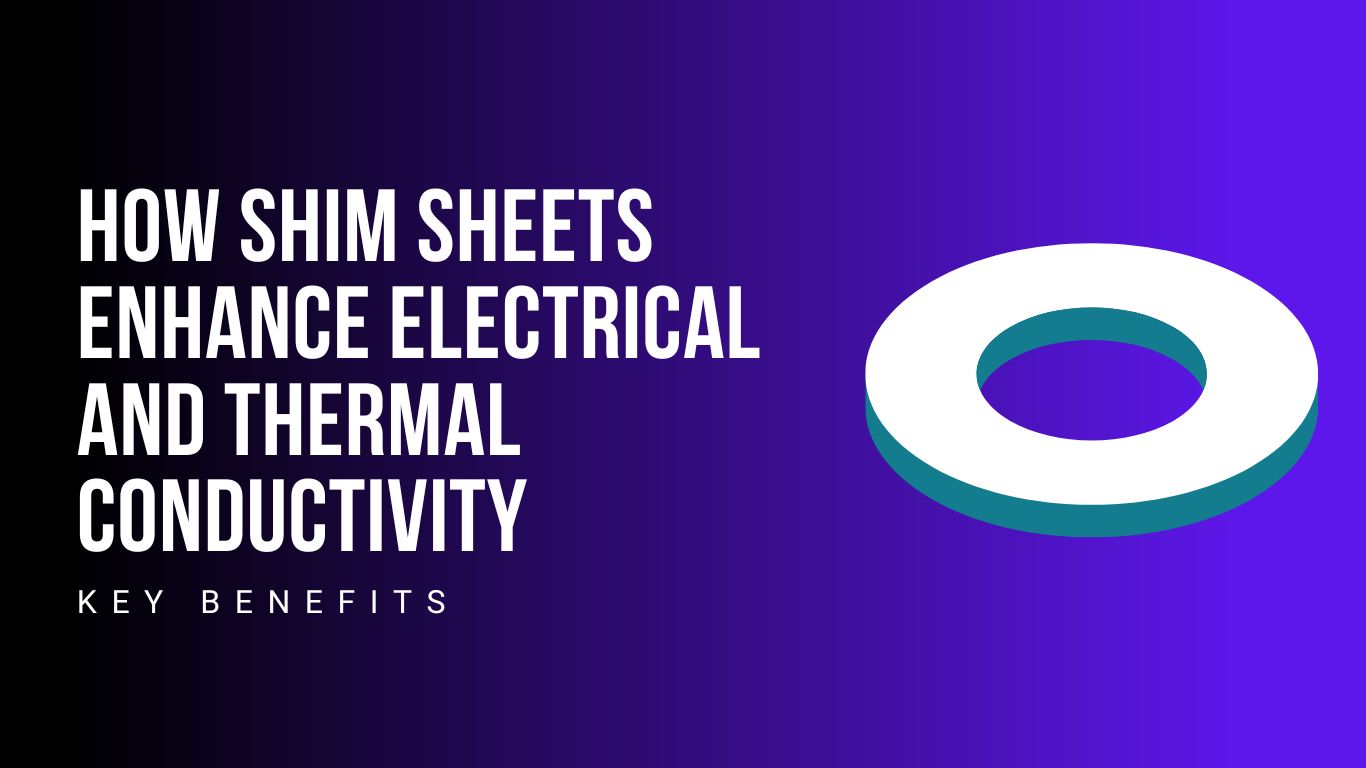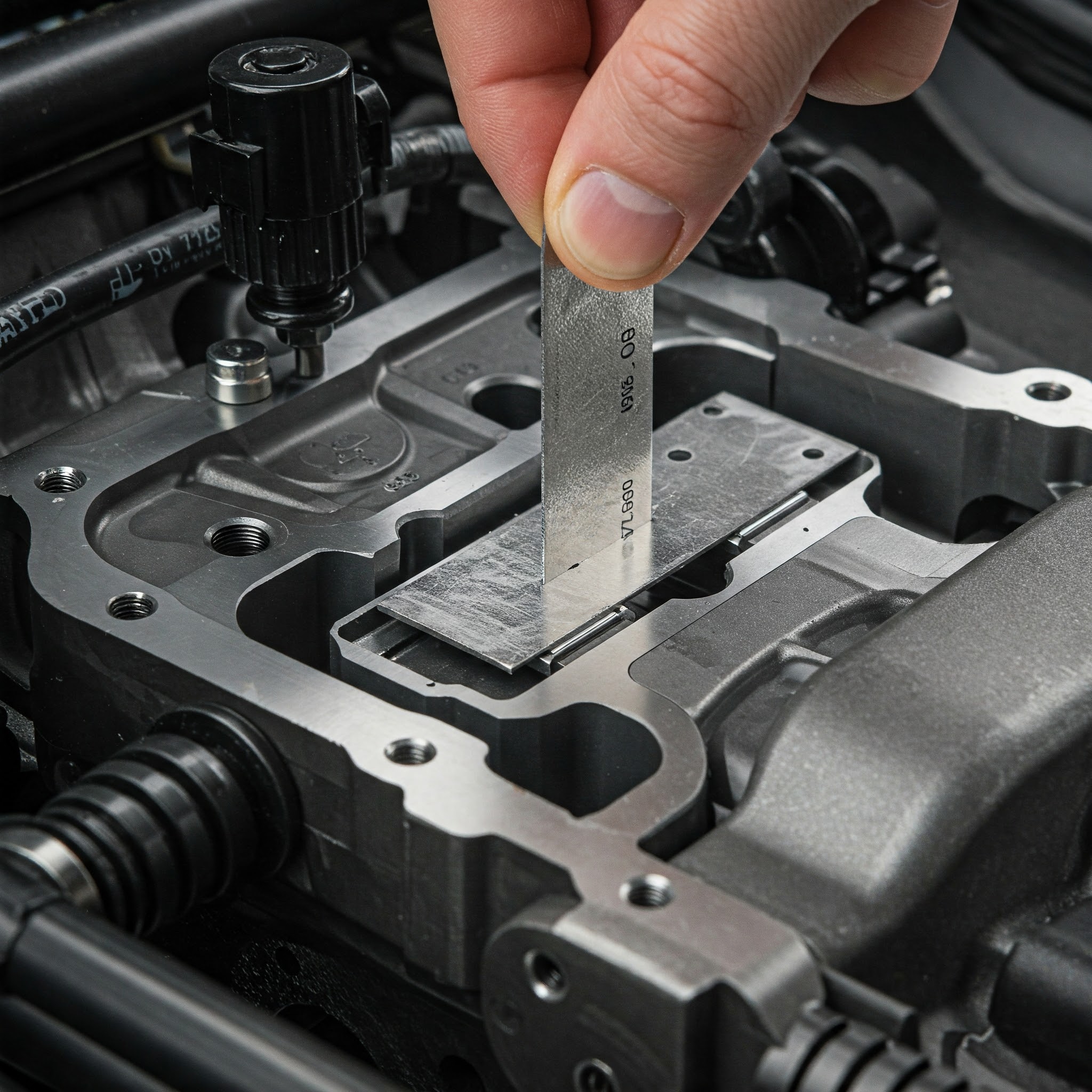How Shim Sheets Enhance Electrical and Thermal Conductivity | Key Benefits

Shim sheets play a vital role in various industries, improving both electrical and thermal conductivity. Whether you're working with electronics, automotive components, or industrial machinery, the right shim material can optimize performance, reduce energy loss, and enhance durability. But how exactly do shim sheets achieve this? Let’s dive in.
Table of Contents
- Introduction
- What Are Shim Sheets?
- How Shim Sheets Improve Electrical Conductivity
- How Shim Sheets Enhance Thermal Conductivity
- Key Benefits of Using Shim Sheets
- Best Materials for Conductive Shim Sheets
- Industries That Rely on Conductive Shim Sheets
- Choosing the Right Shim Sheets for Your Needs
- Conclusion
Introduction
Have you ever noticed how some materials conduct electricity and heat better than others? If you're in manufacturing, electrical engineering, or construction, using the right shim sheet materials can make a significant difference.
Shim sheets are thin, precisely cut materials used to fill gaps, adjust spacing, and improve conductivity in electrical and thermal applications. Whether you’re dealing with circuit boards, heat sinks, or industrial machines, these small but powerful components are essential.
In this guide, I’ll walk you through how shim sheets improve electrical and thermal conductivity, their benefits, and how you can choose the best ones for your needs.

What Are Shim Sheets?
Shim sheets are thin metal or non-metal sheets used to fine-tune spacing, provide insulation, or enhance conductivity in various applications. They come in different materials, thicknesses, and sizes, depending on the intended use.
Types of Shim Sheets
Metallic Shim Sheets – Made from stainless steel shims , brass shim sheet , and aluminum for excellent conductivity.
Non-Metallic Shim Sheets – Made from plastic, graphite, or composite materials to offer insulation while minimizing weight.
Precut Shims – Ready-to-use shims that provide precise thickness adjustments without the need for cutting.
Many shim manufacturers in India produce high-quality shim sheet metal for applications in electrical, automotive, and aerospace industries.
How Shim Sheets Improve Electrical Conductivity
When it comes to electrical conductivity, not all materials are created equal. If you're dealing with electrical circuits, grounding systems, or connectors, you need a low-resistance material that efficiently transfers electricity.
How Do Shim Sheets Help?
Reduce Electrical Resistance – Materials like copper and brass shim sheet create efficient pathways for electricity.
Enhance Grounding – Conductive shims ensure proper grounding, reducing the risk of electrical failures.
Improve Contact Points – Used in connectors and battery terminals, shim sheets enhance electrical flow.
Prevent Energy Loss – Conductive materials like stainless steel shims and brass shim sheet minimize resistance, ensuring efficient power transmission.
Best Conductive Shim Sheet Materials for Electrical Applications
Copper:
Conductivity Level: High
Common Uses: Circuit boards, grounding, connectors
Aluminum:
Conductivity Level: Moderate
Common Uses: Heat sinks, power distribution
Brass:
Conductivity Level: Moderate
Common Uses: Electrical terminals, shielding
Stainless Steel Shims:
Conductivity Level: Low
Common Uses: Structural applications requiring corrosion resistance

How Shim Sheets Enhance Thermal Conductivity
Heat management is crucial in electronics, automotive engines, and industrial machines. Overheating can cause malfunctions, reduced efficiency, and even failure. That’s where thermal-conductive shim sheets come into play.
How Do Shim Sheets Improve Heat Transfer?
Dissipate Heat Efficiently – Materials like aluminum and brass shim sheet transfer heat away from sensitive components.
Enhance Cooling in Electronics – Used in heat sinks, transistors, and CPUs to regulate temperature.
Reduce Thermal Expansion Issues – Help prevent expansion-related stress in machinery.
Increase Energy Efficiency – Ensures stable temperatures, reducing power consumption.
Best Thermal Conductive Shim Sheet Materials
Copper
Thermal Conductivity: Excellent
Common Applications: Heat sinks, electrical applications
Aluminum
Thermal Conductivity: Very Good
Common Applications: Cooling plates, HVAC systems
Graphite
Thermal Conductivity: High
Common Applications: Thermal pads, insulation
Stainless Steel (SS) Shim Plate
Thermal Conductivity: Moderate
Common Applications: High-temperature applications requiring corrosion resistance
Key Benefits of Using Shim Sheets
Using the right shim sheets can improve performance, reduce wear and tear, and enhance efficiency in various industries.
Advantages of Conductive Shim Sheets
Improved Electrical Performance – Ensures smooth current flow in circuits.
Better Heat Management – Helps dissipate heat in high-temperature environments.
Increased Durability – Reduces stress on components, preventing premature failure.
Versatile Applications – Used in automotive, aerospace, electronics, and industrial sectors.
Cost Savings – Prevents costly repairs by enhancing component lifespan.

Industries That Rely on Conductive Shim Sheets
Many industries depend on shim sheet metal for conductivity and durability.
Electronics – Used in circuit boards, grounding applications, and electrical insulation.
Automotive – Found in engine heat shields, battery connectors, and exhaust systems.
Aerospace – Ensures thermal stability in high-altitude and space environments.
Industrial Machinery – Helps with heat dissipation and mechanical spacing.
Leading shim manufacturers in India supply precut shims and stainless steel shims for these industries, ensuring high-quality performance.
Choosing the Right Shim Sheets for Your Needs
Now that you know the importance of shim sheets in electrical and thermal applications, how do you select the right one?
Factors to Consider
Material Type – Choose copper or aluminum for high conductivity, graphite or SS shim plate for insulation.
Application Requirements – Determine if you need electrical conductivity, thermal management, or both.
Thickness and Size – Select based on gap-filling needs and thermal/electrical load requirements.
Environmental Conditions – Consider corrosion resistance, moisture exposure, and temperature tolerance.
By selecting the right shim sheet metal, you can optimize performance, prevent system failures, and save costs in the long run.
Conclusion
Shim sheets may be thin, but they have a massive impact on electrical and thermal conductivity. Whether you’re working with electronics, automotive parts, or industrial machines, investing in the right shim sheet material enhances efficiency and reliability.
If you need to reduce electrical resistance, improve heat dissipation, or prevent component failure, choosing high-quality copper, aluminum, or stainless steel shims is the way to go.
Looking for high-quality shim sheet metal? Leading shim manufacturers in India offer precut shims, SS shim plate, and brass shim sheet for various industrial applications. Get the best for your project today!
About Sachin Shim
Our range of shims includes metal, machine, industrial, precision, adjustable, machinery, engineering, custom, and alignment shims. These shims are designed for various applications, such as machinery alignment, fine adjustments in industrial-grade machines, engineering projects requiring steel shims, heavy-duty machinery requiring versatile metal shims, aerospace applications demanding precision stainless steel shims, automotive use requiring adjustable aluminum shims, precision engineering projects using high-quality brass shims, construction applications requiring durable plastic shims, specialized machinery needing customized shim solutions, and manufacturing processes requiring fine-tuning shims for precise alignment and accurate machine setup and leveling.
Author
Meet Sachin, our expert author in industrial materials with a deep understanding of stainless steel shims, bolts, and shim washers. With years of experience, Sachin brings valuable insights and expertise to this guide, making her a trusted source for all things related to washers. Join us as we delve into the art of crafting washers with Sachin leading the way.
List Other similar blogs







